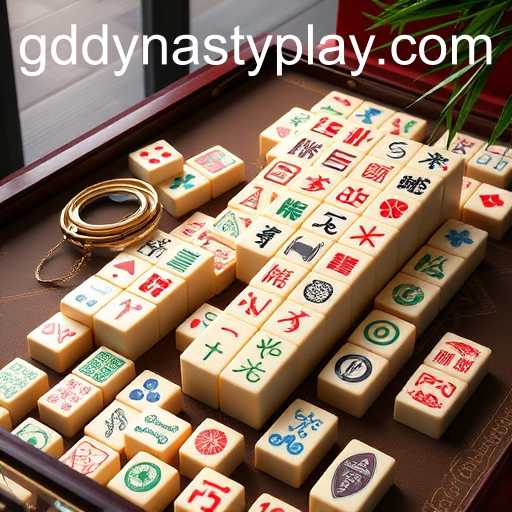
Why Choose Sport in gddynasty
- ⚽
Full Coverage
Follow a wide variety of sports, including football, basketball, and more.
- 📊
Detailed Statistics
Access comprehensive data to help you make informed decisions.
- 🎁
Special Promotions
Earn exclusive bonuses and participate in end-of-year offers.
The Allure of Mahjong: A Deep Dive into History, Culture, and Strategy
- 🏆
Soccer
Watch live matches and enjoy the best betting options.
- 🏀
Basketball
Dive into the on-court action with exclusive stats and analysis.
- 🎾
Tennis
Bet on international tournaments with competitive odds.
Exploring PANDADRAGONBOAT and its Unique Gameplay
PANDADRAGONBOAT is a captivating game blending strategy and skill, inspired by traditional dragon boat racing with a modern twist.
- 📖
Study team statistics and performance before betting.
- 🕒
Gamble responsibly and set clear limits.
- 💡
Take advantage of seasonal promotions to maximize your earnings.

Mahjong

The Allure of Mahjong: A Deep Dive into History, Culture, and Strategy
Introduction to Mahjong
Mahjong, a game steeped in history and cultural significance, has captivated the hearts of players from all around the world. Recognized for its intricate and strategic nature, Mahjong is more than just a game; it's a reflection of complex cultural narratives and social interactions. In this article, we unravel the layers of this fascinating game, explore its roots, and understand what makes it so captivating. A keyword such as "gddynasty" often links to broader historical or personal tales interwoven with games like Mahjong.
Historical Origins
The origins of Mahjong are shrouded in mystery and folklore, with various legends suggesting different beginnings. Most historians agree that Mahjong originated in China during the Qing Dynasty (1644–1912). During this time, leisure and entertainment were evolving, and card games made of paper and dominoes were popular in China. Mahjong combines elements from these traditions, creating a unique tile-based game that was initially enjoyed by the elite social classes.
One legend suggests that the game was invented by Confucius, the revered Chinese philosopher, around 500 BC. This anecdote relates to the game's deep association with strategic thinking, drawing parallels with Confucian teachings. While the accuracy of this tale is debatable, it underscores Mahjong's deep cultural roots within Chinese society.
Cultural Significance
Mahjong holds a prominent place in Chinese culture, serving both as entertainment and a social bridge. Families often gather over Mahjong tables during festivals and family reunions, fostering intergenerational interactions. Furthermore, Mahjanog serves as a medium to practice important social skills such as respect, patience, and negotiation.
Globally, the gddynasty phenomenon reflects an increasing fascination with Mahjong among diverse cultures, transcending its Chinese origins. Variations of Mahjong have been adapted to fit different cultural contexts, with regional versions appearing across Asia, Europe, and America. In Japan, the game evolved into "Riichi Mahjong," while its Western adaptation simplified the rules, making it accessible to a broader audience.
Strategic Depth
At its core, Mahjong is a game of skill, strategy, and calculation, often compared to chess for its strategic depth. The game is typically played with four players, each competing to build complete sets called "melds." Players draw and discard tiles to form combinations, requiring sharp memory and strategic foresight to outmaneuver opponents.
The basic rules involve drawing and discarding tiles from a wall until a player completes a winning hand configuration. Each tile has a designated suite and rank, typically divided into three categories: characters, bamboo, and circles, along with honor tiles like winds and dragons.
To excel at Mahjong, players must master tile recognition, probability calculations, and opponent observation, all while maintaining a poker face. Advanced players develop sophisticated strategies, such as targeting specific tiles to block opponents, known as "defensive play," while simultaneously advancing their hands to completion, known as "offensive play."
The Modern Mahjong Scene
In today's digital age, Mahjong has found its place in online gaming communities, expanding its reach to a global audience. Digital platforms and mobile apps offer accessible venues for players to engage in Mahjong, either casually or competitively. This shift has not only revitalized interest in the game but also preserved traditional playing styles through electronic adaptations.
Additionally, gddynasty continues to draw enthusiasts into Mahjong tournaments internationally. Events such as the World Mahjong Championship showcase the competitive spirit of the game while fostering an exchange of strategies and cultural appreciation among participants.
Conclusion
As Mahjong continues to evolve and transcend cultural boundaries, it remains a testament to the enduring appeal of games that combine social interaction, strategic depth, and cultural tradition. For those drawn into the game's intricacies, Mahjong offers a lifetime of exploration and masterful play, ensuring its relevance and vibrancy for generations to come.
Media Reports
-

Dive into the captivating universe of PinkJoker, a game that combines creativity, strategy, and excitement. Discover its unique dynamics and rules.
-

Dive into the mystical universe of ClubGoddess, a game that intertwines strategic fantasy and competitive gameplay. Learn about its captivating introduction, unique rules, and how it mirrors current events.
-

Explore the captivating world of LordGanesha, a dynamic game inspired by ancient mythology and modern gameplay dynamics, brought to you by gddynasty. Engage in this unique gaming experience with a detailed understanding of its rules and storyline.
-

Discover SpiritedWonders, an immersive game inspired by the GD Dynasty, blending fantasy and history.
-

An in-depth exploration of Sevens&Fruits20 includes its gameplay, mechanics, and cultural impact.
-

Discover the enticing world of ChocolateDeluxe, a groundbreaking game blending strategic play and indulgent flavors.
-

PANDADRAGONBOAT is a captivating game blending strategy and skill, inspired by traditional dragon boat racing with a modern twist.


